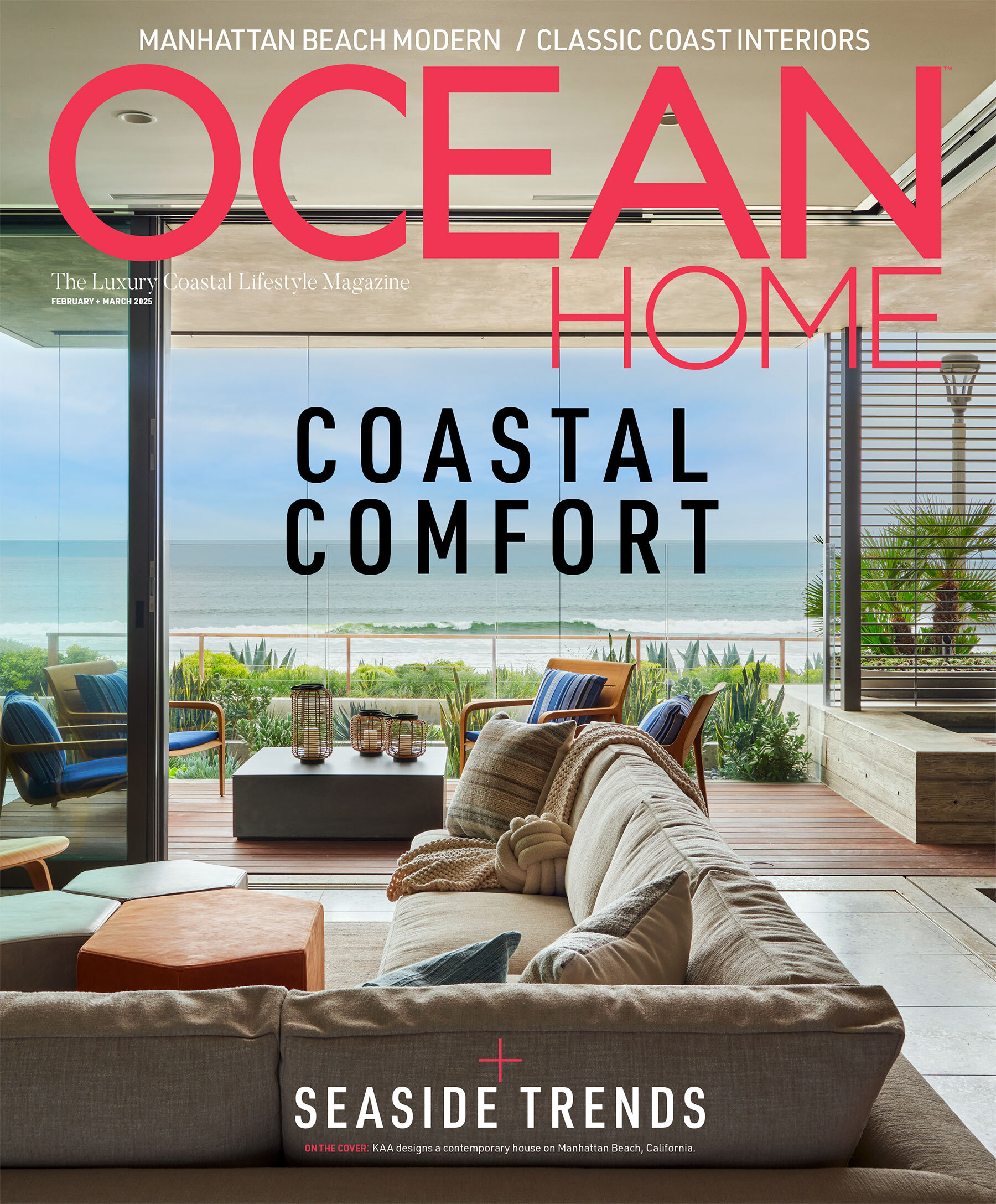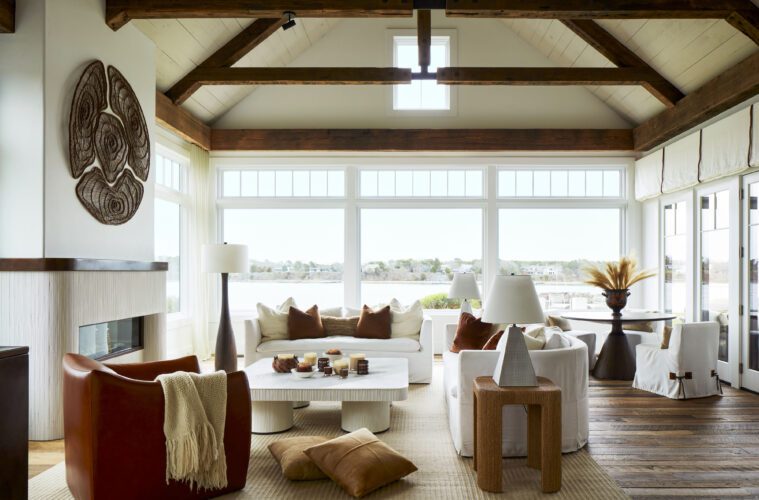When a Boston couple built their modern Shingle-style second home on Martha’s Vineyard, they wanted their retreat to be as elegant as it is down to earth.
The residence, which was designed by Chuck Sullivan, AIA, principal of Sullivan + Associates Architects, and features interiors by Mika Durrell, founder of West Tisbury-based Able Moraine, is perched on a bluff presiding over Edgartown Harbor. Described by Durrell as “peacefully designed with efficient programming,” the weekend and holiday getaway is reached via a picturesque, meandering driveway and is nestled into the landscape to give top billing to the spectacular water views.
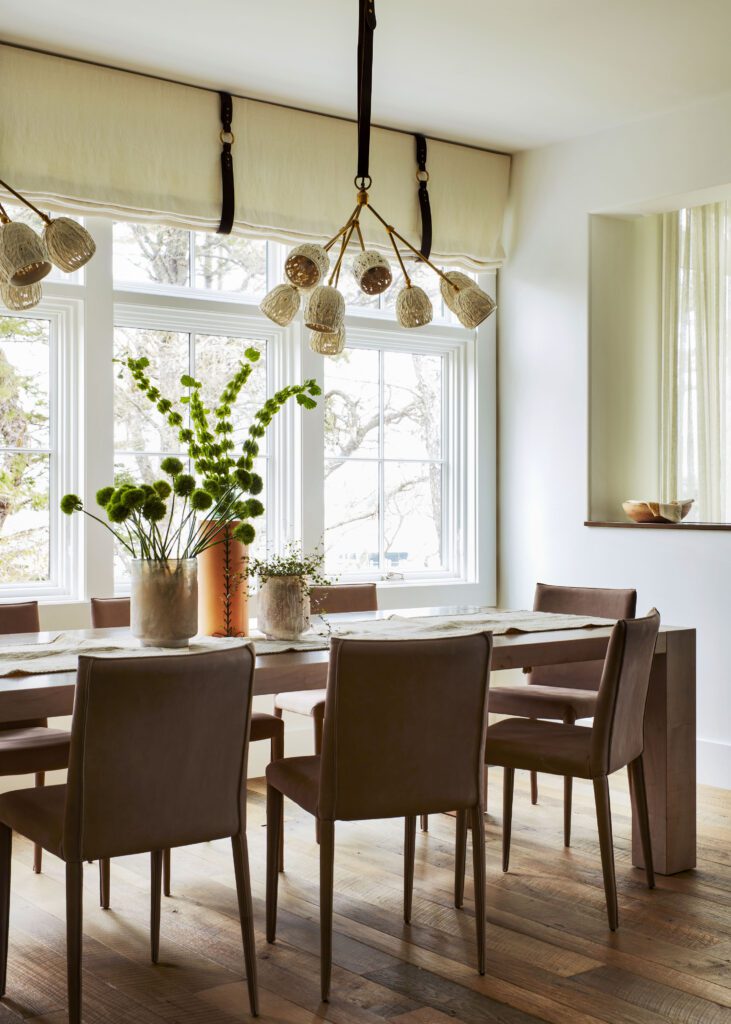

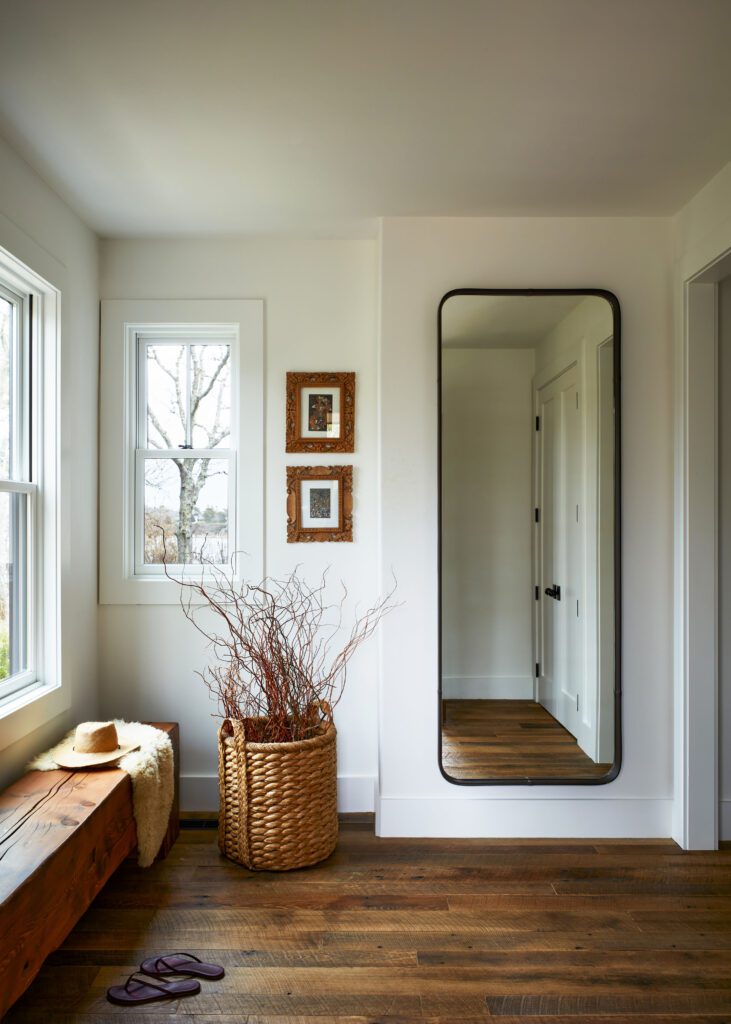

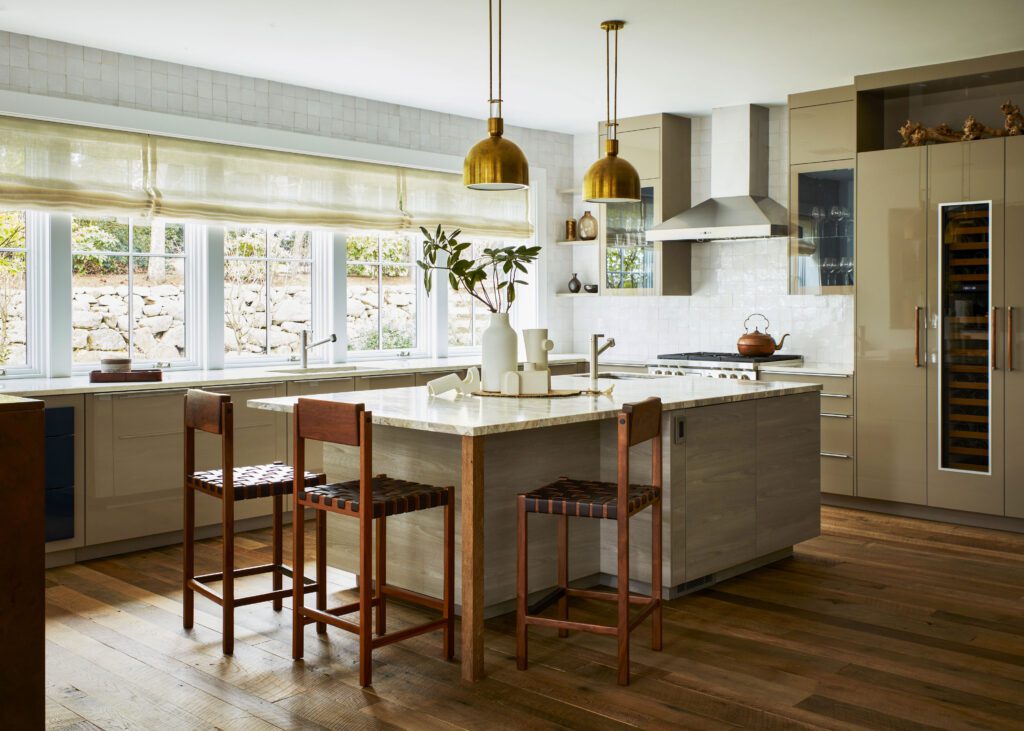

Using natural, reclaimed, and organic elements, Durrell created interior spaces that are rustic yet refined and reflective of the lifestyle of the couple and their twin college-age daughters. “The theme of this project was inspired, in large part, by the selection of the flooring, which the owners had used in a previous house,” Durrell says.
“Reclaimed oak with a blended variety of blonde and chocolate tones, it has a textural raked finish that looks like a saw blade was run across it. It became the base for a color palette of cream, tobacco, cognac, and burnt caramel.” In Durrell’s hands this strong base point grew like a plant trained on a wire. “It looks organic, but it’s all intentional,” she says, adding that “this project magically came together in a sophisticated way.”
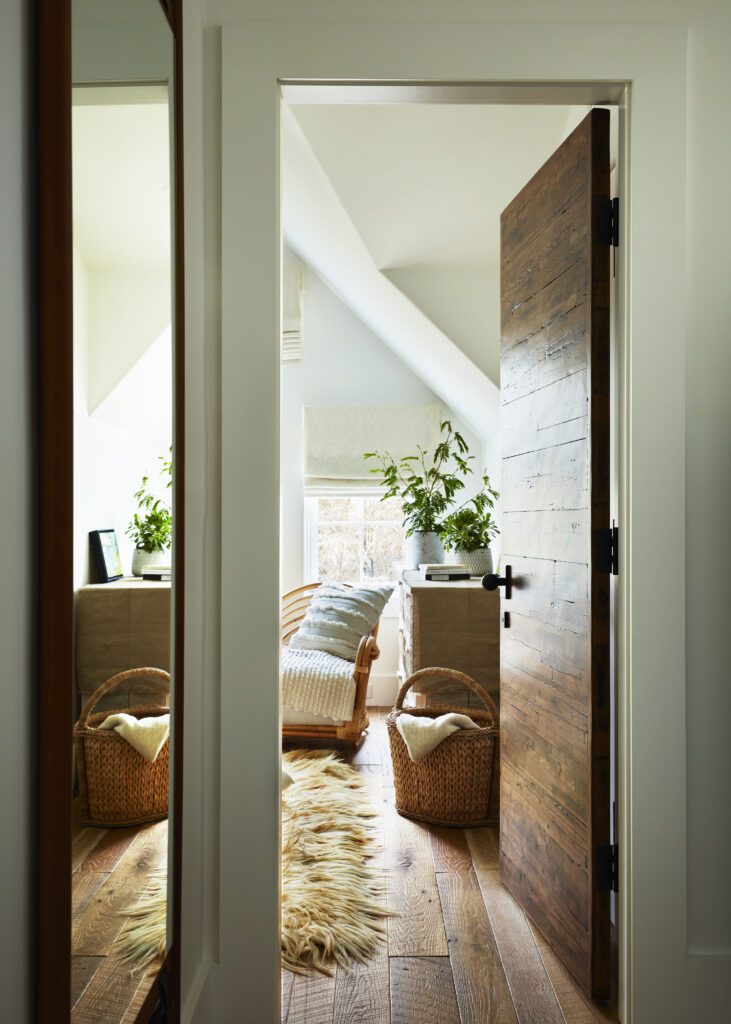

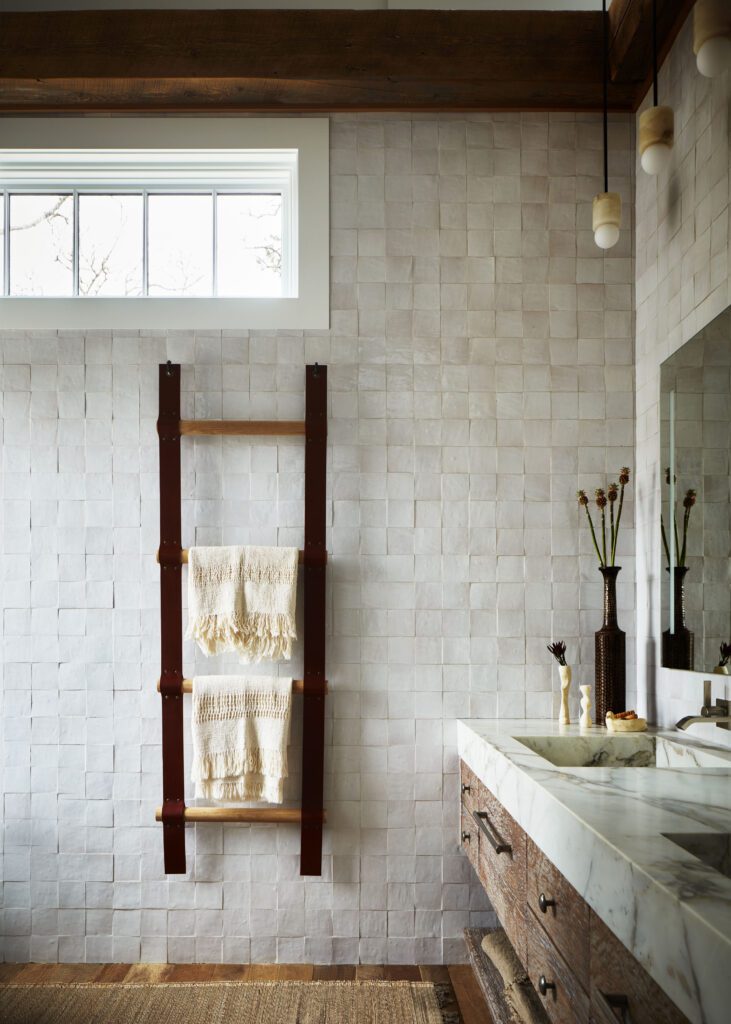

The overall design, which Durrell calls “a balancing act that’s a nice blend of custom, retail, and specialty items,” makes the house “feel at ease” even though there’s a “sense of formality.” On this sedate scheme, Durrell layered natural materials—stone, copper, leather, rustic woods, wool, linen, cashmere, and alpaca—that add texture and a cozy warmth. “We had a simple recipe for the design,” she says. “Leather, wood, with a shard of metal and a little linen.”
Durrell’s collective of local artisans, including Whetstone Workshop for architectural metalwork, Jeff Soderbergh for reclaimed-wood furnishings, materials, and millwork, and artisan leather worker Jay Teske, created custom elements ranging from the ladder-like leather and wood towel rack in the primary suite to the copper fireplace mantel topper in the great room.
“Every piece is a work of art, and all of the natural elements and materials have character and history,” Durrell says. “The custom furniture, including a set of consoles and the sink counter in the guest bath, is inspired by the wood itself.”
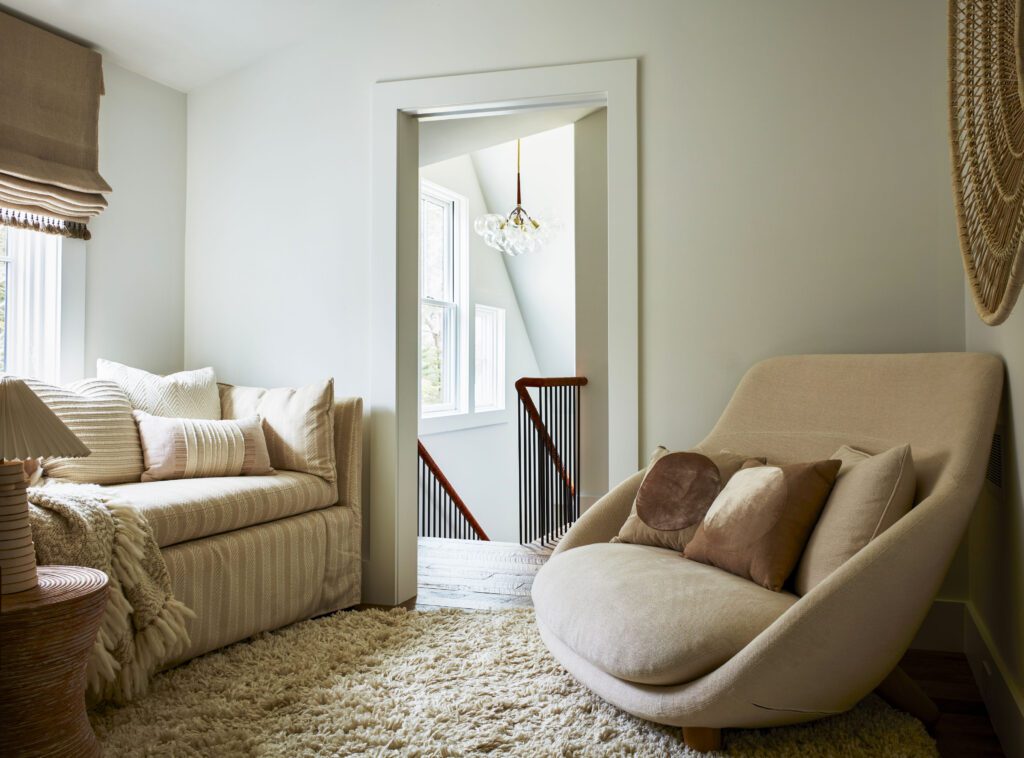

The entry, which is defined by a simple wooden bench made from a slab of reclaimed wood and a mirror framed in forged copper, sets the tone for the home.
In the great room, a pair of curved sofas, upholstered in white linen, embrace the fireplace, and exposed ceiling beams, made of reclaimed wood, heighten the connection to the outdoor scenery framed by banks of windows. Geometric lamps provide soft illumination.
The dining room is a triumph in restrained craftsmanship, with each detail conveying, in a subtle manner, the work of the hand. The custom dining table, made of reclaimed wood, has a sleek, clean look. It’s softened by the chairs, which are wrapped in suede right down to the end of their legs.
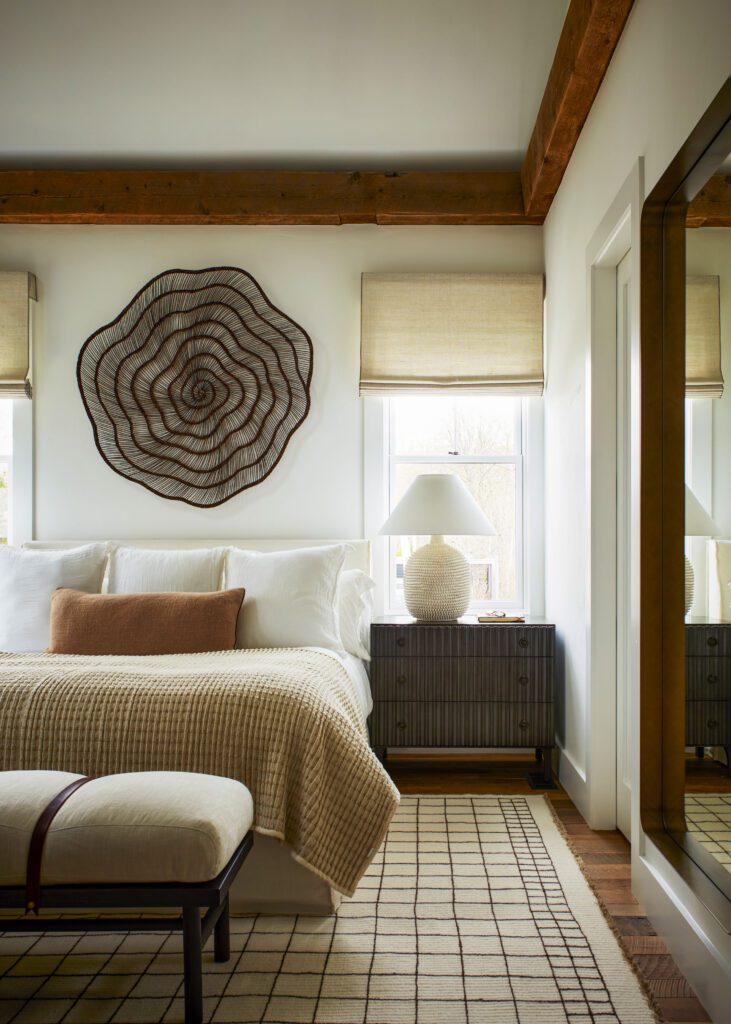

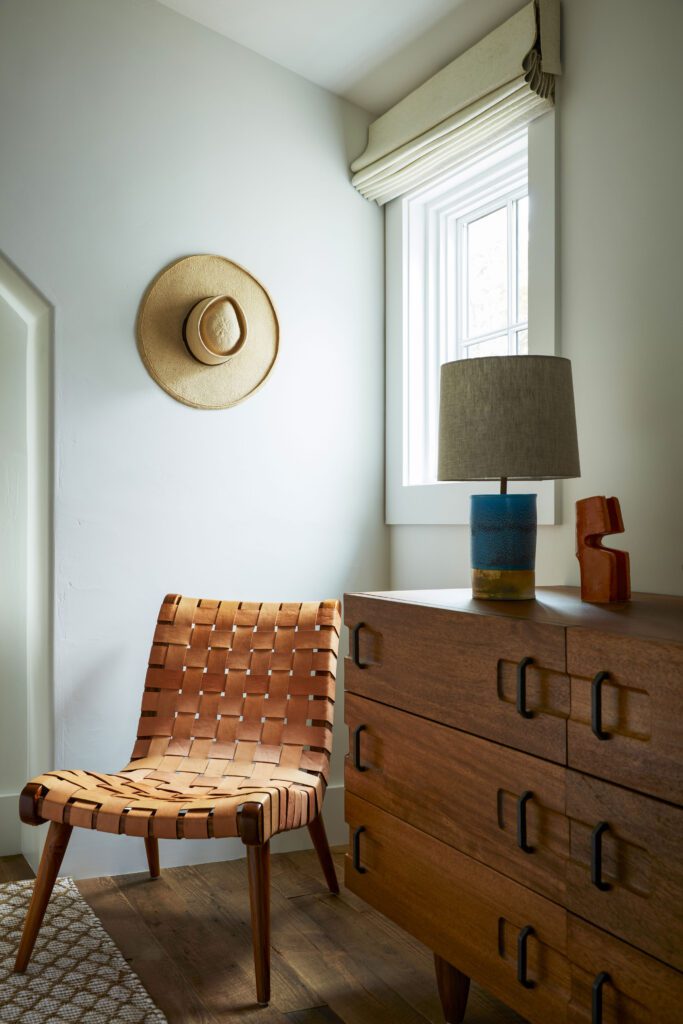

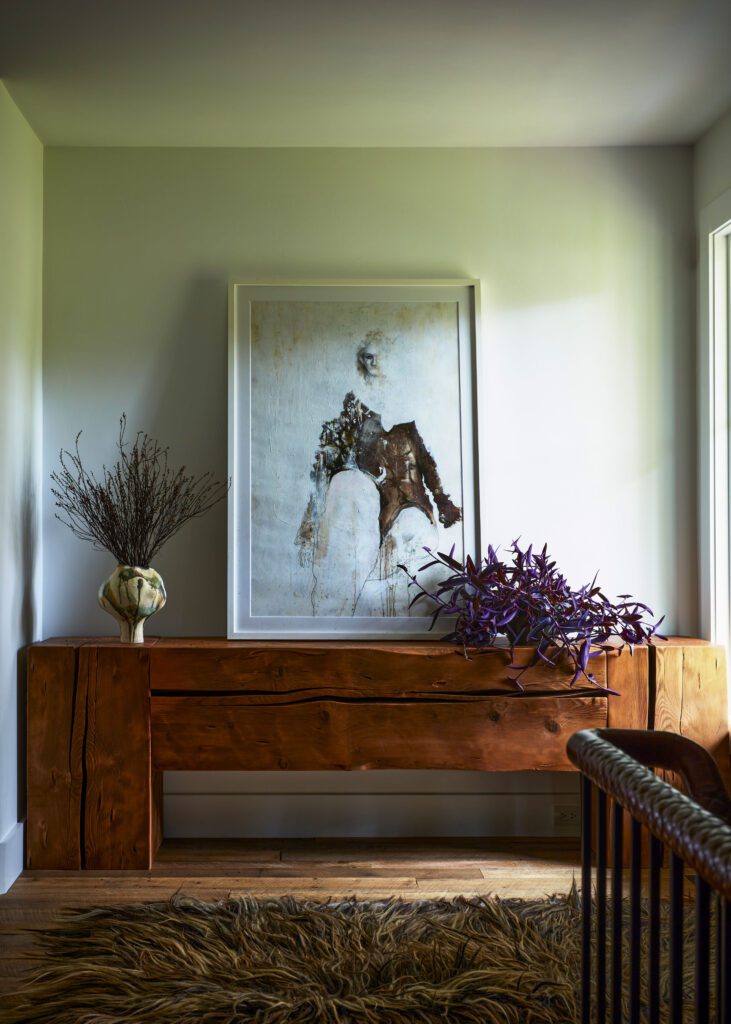

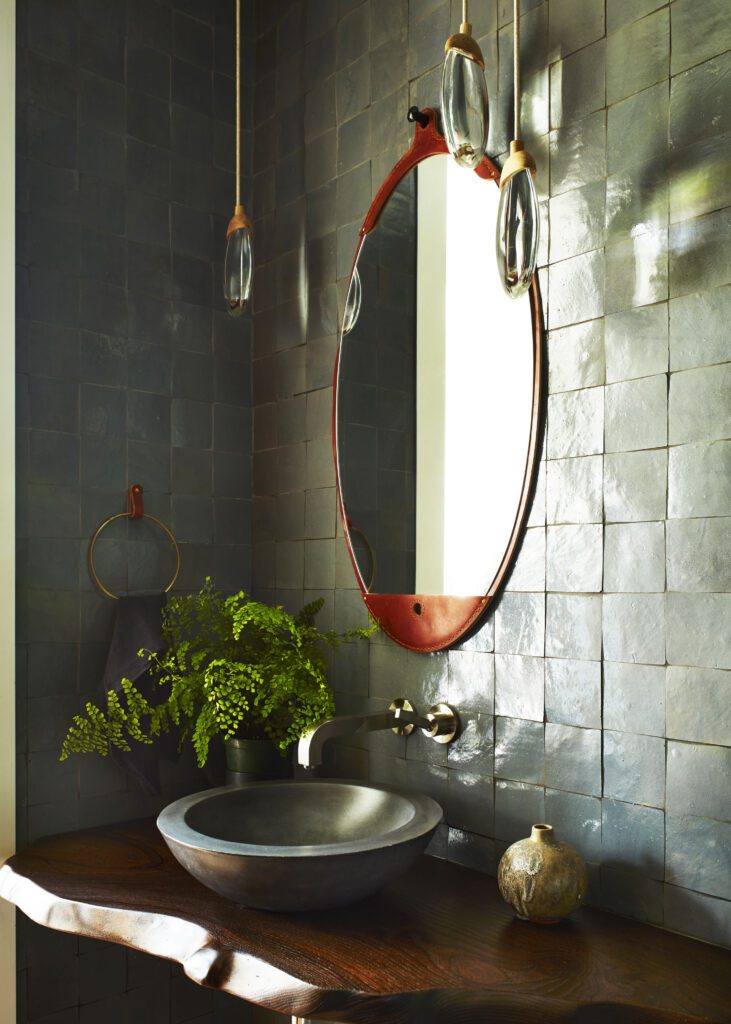

The leather straps on the Roman valance that cleverly hides the automatic solar shades are repeated in the brass pendants that feature bloom-like porcelain globes and in the primary suite ottoman reposing at the foot of the bed. The primary suite highlights Durrell’s affinity for texture. The tactile room is grounded by an alpaca rug with a chocolate-color checkerboard design that is so soft and supple that one might be tempted to use it as a blanket.
“The room is a balance between light and dark, masculine and feminine,” she says.
One of the more unusual and amusing details in this highly crafted house is the handrail of the central staircase: It was braided by hand by Teske. Hand-crafted Moroccan Zellige tile ties the spaces together, the slight variations of each piece adding to the overall interest. Durrell used it to panel the window wall and stove wall in the kitchen and on the walls of the baths.
Each room is in a different complementary hue. Beveled and rounded edges on the walls, what Durrell calls a slight detail, are another distinctive ode to craftsmanship: They soften the spaces, providing a feeling of utmost comfort. “This house reflects my core values and the collective nature of my work,” Durrell says. “The objects that are made by the specialty fabricators bring the home to life because they are unique.”
